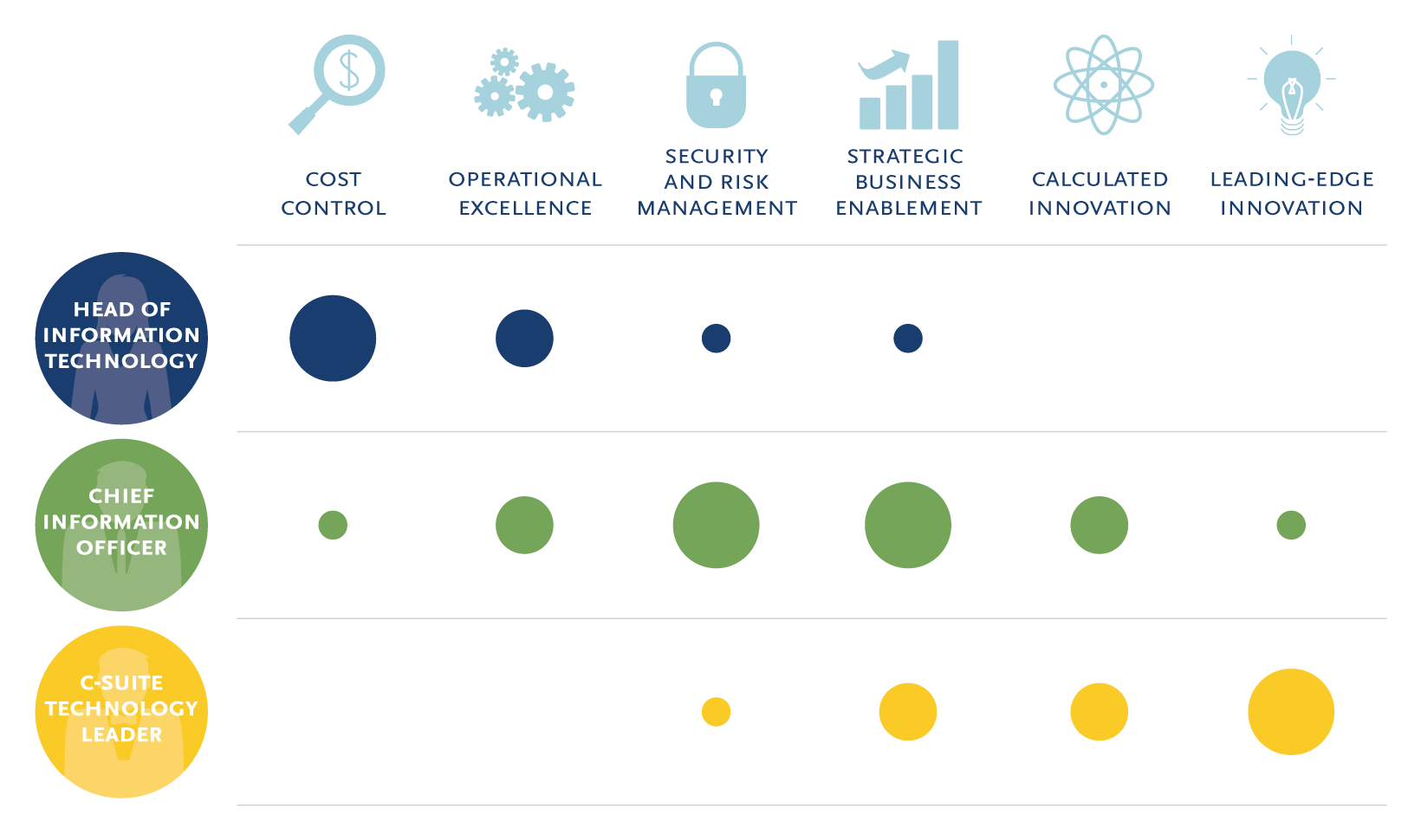Technology is evolving at a rapid pace across all
corners of the global economy. Advances in areas
such as cloud computing, machine learning and
cybersecurity have dramatically evolved the role of
the information technology organization. No longer
simply a back office function, IT is now a critical part
of the digital evolution where internal systems and
externally facing technologies are closely integrated.
With the increasing pressure to keep up with the
constant evolution of technology, we find many
of our clients unsure on what type of IT leader
best suits their organization. Having worked with
clients from startups to large global organizations
across industries, we see three profiles that can
serve as useful archetypes for your “bullseye” and
can be valuable in targeting the right leader.
As many of our clients find, the question is not
which profile is the best, but rather, which is best
for the needs and capabilities of the organization?
IT leadership archetypes
The needs for top IT leaders will vary in terms of the industry, size and stage of a particular organization.
Additionally, titles can vary wildly across industries, which can cause confusion when organizations seek to fill a
“title” versus the true needs for a role. We highlight key differences among these IT leadership archetypes in terms
of capabilities, focus and desired impact for an organization below.
Head of information technology
- Functional leader of an IT
organization and typically
reports to the CFO or COO
- Manages and leads
teams effectively with
an internal focus on building
cross-functional relationships
- Likely to be focused on driving
results, leading smaller teams
and IT projects
- Strategic planning typically
occurs on an annual basis to
align with budget cycles
This role may be right for the organization when...
- The focus is on cost control and
reliable operations
- A high-growth, early-stage
company is not ready to commit
to the CIO role or a mature
organization has typically not
used the CIO title
Chief information officer
- "Typical” CIO serves as the
strategic leader of an IT
organization and reports to
the CEO, CFO or COO
- Has high results-orientation
and leads large, complex
programs across functional
areas of the business
- Leads and builds
technology teams
- Has the ability to look two
to three years ahead and is
able to align IT with strategic
business objectives
This role may be right for the organization when...
- A “normal” emphasis is
placed on IT with operational
and strategic balance
- Fairly equal weight is given
to innovation and the
current state
C-suite technology leader
- Senior technology leader
within an organization — a
blend of CIO/CTO/digital/GM
- Typically reports to the
president or CEO and has
frequent board exposure
- Builds teams and
next-generation leaders
- Has experience evaluating
and integrating new and
disruptive technologies
- Looks five years ahead into the
next business cycle(s)
This role may be right for the organization when...
- Technology is core to the
business and thus requires
a strategic leader with a seat
at the table
- Significant digital transformation
is critical to the future success of
the company
Matching the role with your priorities
Many organizations face a spectrum of priorities related to technology, ranging from cost control to driving leading-
edge innovation. IT leaders will tend to focus on these to varying degrees based upon their capabilities as well
as the focus of the organization.

While it can be tempting to be drawn to the more innovative priorities along the spectrum, it’s critical to align the right
IT leader profile to your organization’s needs. A head of IT can drive more value than a C-suite technology leader in an
organization needing a tight focus on efficiency and cost. Alternatively, if technology is increasingly core to your business,
a C-suite technology leader may be necessary for your organization. As technology continues to evolve,
organizations must consider a wide range of factors to ensure that their next IT leader hits the “bullseye” and delivers
the value most needed.